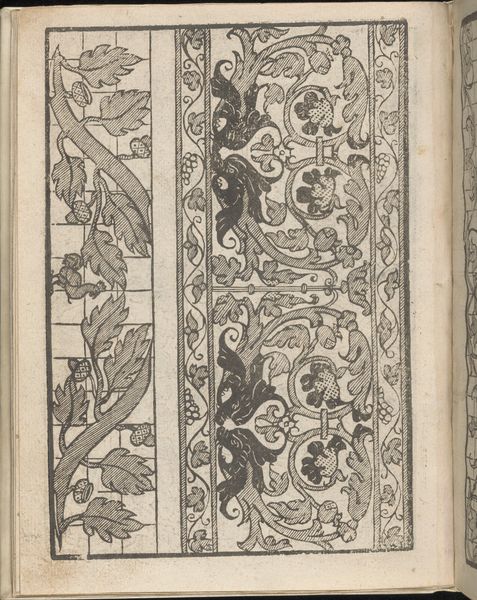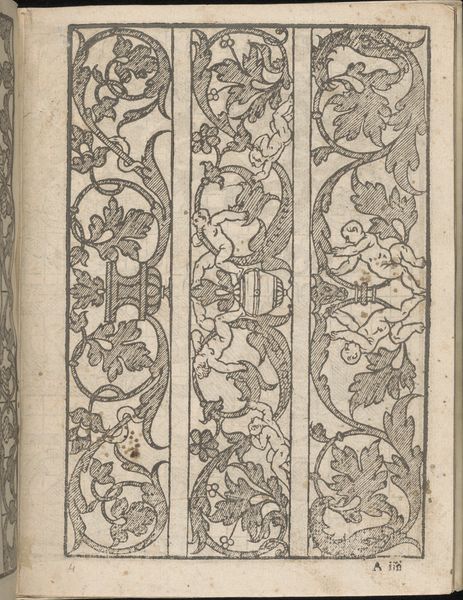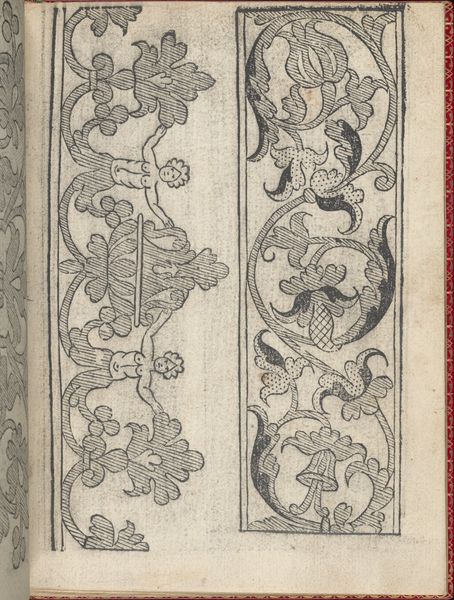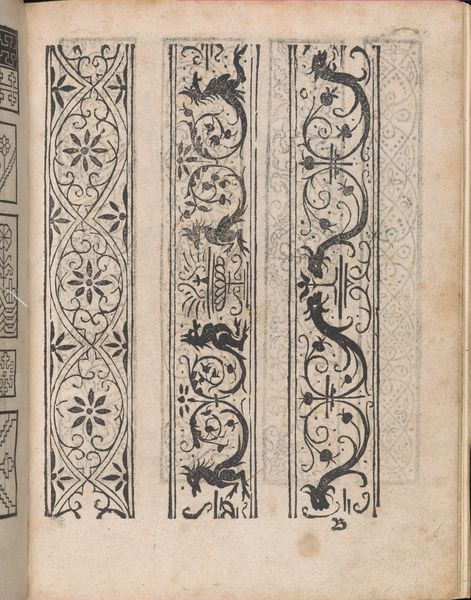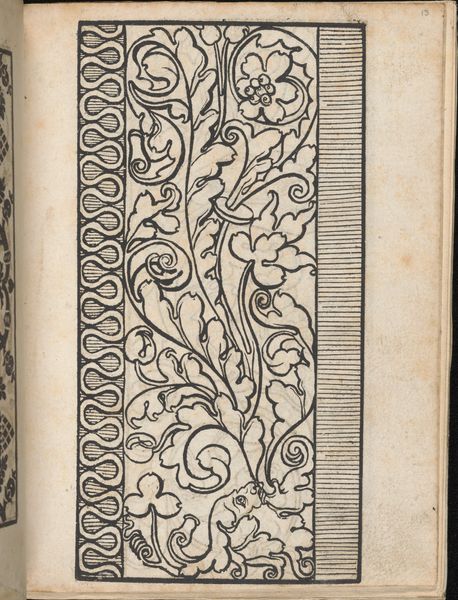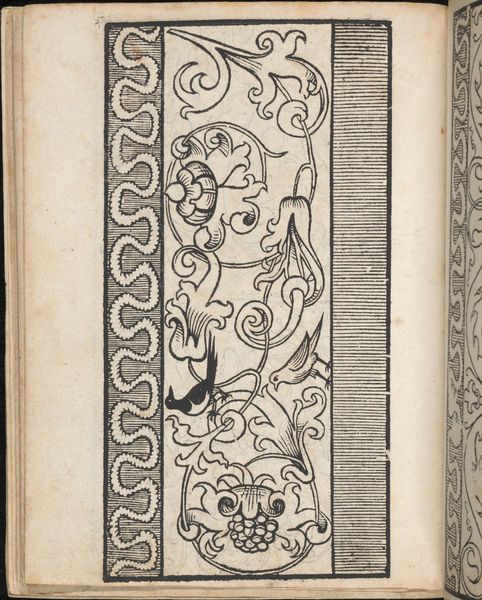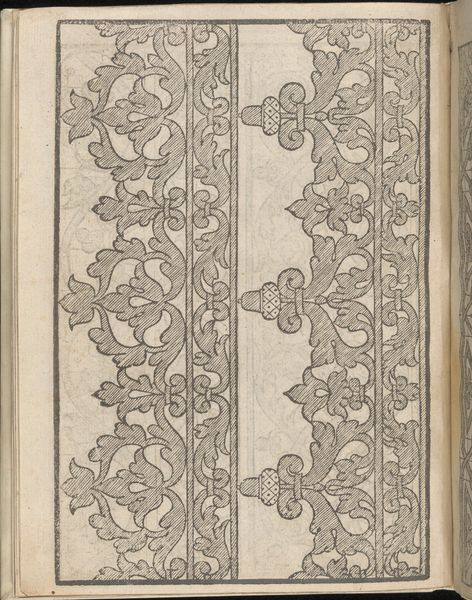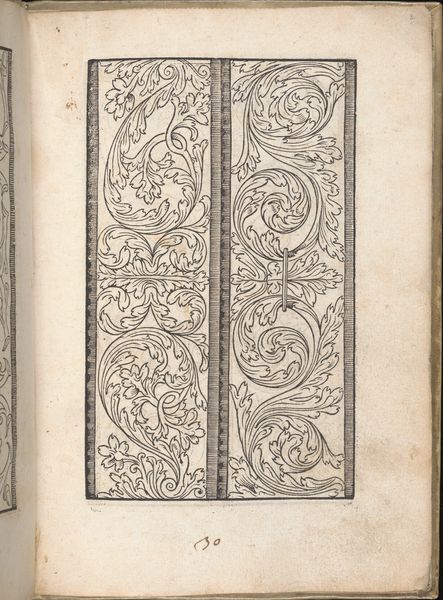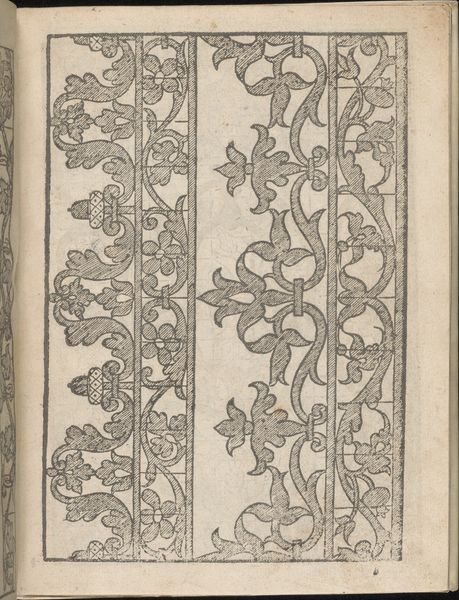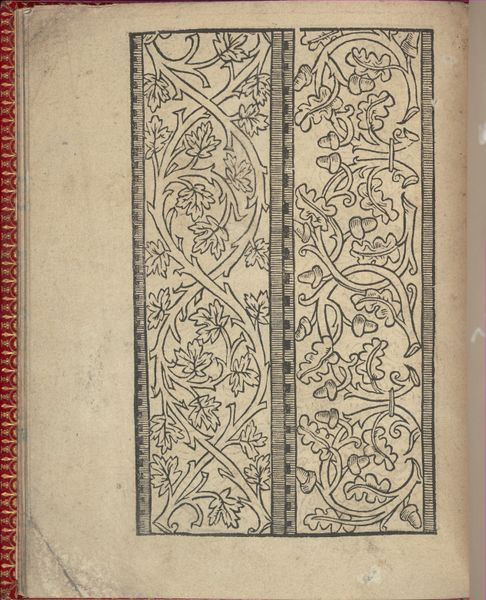
Modelbuch aller Art Nehens vn Stickens (Page 6v) 1535
0:00
0:00
drawing, print, woodcut
#
drawing
# print
#
bird
#
flower
#
woodcut
#
line
#
northern-renaissance
Dimensions: Overall: 7 5/16 x 5 5/16 in. (18.5 x 13.5 cm)
Copyright: Public Domain
Curator: Well, look at this! Right away, I'm drawn to how whimsical and utterly serious it is, all at once. A sense of organized playfulness—isn’t that the best kind? Editor: We're looking at "Modelbuch aller Art Nehens vn Stickens (Page 6v)," a page from a book of embroidery patterns, created around 1535 by Christian Egenolff. It's a woodcut print, residing here at the Metropolitan Museum of Art. Curator: Embroidery patterns...imagine! Someone flipping through this book, planning their next masterpiece, a little stitch at a time. You feel this immense history when you're facing something like this! Editor: The formal qualities are indeed captivating. The black ink creates a stark contrast against the paper. The image consists of vertical bands filled with symmetrical, curvilinear designs featuring flowers, birds and ornate decorative elements. The use of line is particularly noteworthy—bold, unwavering, almost architectural in its precision. Curator: The birds are particularly intriguing, and somewhat playful. And that's quite the decorative flourish surrounding them! But still so contained... what’s it trying to say? I am sensing there are rules, aren't there? Even in ornamentation. I imagine that sense of decorative discipline resonated during the Northern Renaissance. Editor: Certainly. It speaks to a desire for order, yet the flowing lines and natural motifs soften that rigidity. Notice how Egenolff masterfully balances positive and negative space? The density of the patterns contrasts beautifully with the untouched areas of the page, guiding the eye. The designs’ rhythm, structure, balance and its texture feel both historically grounded and aesthetically timeless. Curator: The materiality! Think about the hands that touched this page, the slow act of carving the woodblock...each print a repetition, yet never quite the same. In an age before mass production, I mean. Each book opened by candlelight! Makes you ponder the human connection, doesn’t it? What about those of us who aren't familiar with textile patterns from the Renaissance, can we still connect to it, feel something? Editor: Indeed. I find that its universal visual language transcends the centuries, a quiet reminder that humans have always sought to adorn their world.
Comments
No comments
Be the first to comment and join the conversation on the ultimate creative platform.
